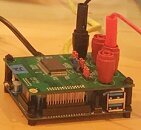Wednesday, December 2nd 2020
RISC-V Processor Achieves 5 GHz Frequency at Just 1 Watt of Power
Researchers at the University of California, Berkeley in 2010 have started an interesting project. They created a goal to develop a new RISC-like Instruction Set Architecture that is simple and efficient while being open-source and royalty-free. Born out of that research was RISC-V ISA, the fifth iteration of Reduced Instruction Set Computing (RISC) ideology. Over the years, the RISC-V ISA has become more common, and today, many companies are using it to design their processors and release new designs every day. One of those companies is Micro Magic Inc., a provider of silicon design tools, IP, and design services. The company has developed a RISC-V processor that is rather interesting.
Apart from the RISC-V ISA, the processor has an interesting feature. It runs at the whopping 5 GHz frequency, a clock speed unseen on the RISC-V chips before, at the power consumption of a mere one (yes that is 1) Watt. The chip ran at just 1.1 Volts, which means that a very low current needs to be supplied to the chip so it can achieve the 5 GHz mark. If you are wondering about performance, well the numbers show that at 5 GHz, the CPU can produce a score of 13000 CoreMarks. However, that is not the company's highest-performance RISC-V core. In yesterday's PR, Micro Magic published that their top-end design can achieve 110000 CoreMarks/Watt, so we are waiting to hear more details about it.
Source:
EE Times
Apart from the RISC-V ISA, the processor has an interesting feature. It runs at the whopping 5 GHz frequency, a clock speed unseen on the RISC-V chips before, at the power consumption of a mere one (yes that is 1) Watt. The chip ran at just 1.1 Volts, which means that a very low current needs to be supplied to the chip so it can achieve the 5 GHz mark. If you are wondering about performance, well the numbers show that at 5 GHz, the CPU can produce a score of 13000 CoreMarks. However, that is not the company's highest-performance RISC-V core. In yesterday's PR, Micro Magic published that their top-end design can achieve 110000 CoreMarks/Watt, so we are waiting to hear more details about it.

65 Comments on RISC-V Processor Achieves 5 GHz Frequency at Just 1 Watt of Power
For reference this core:github.com/openhwgroup/cva6
Can hit 2 GHz on 22fdx node.
Look I know RISC-V is everyone's darling but so far there is nothing particularly impressive about the products using it.They are also low performance for that reason.
- 13 000 CoreMarks at 5GHz (5.19GHz), 1.1V and <1W (realistic or not, I do not see where the under Watt claim came from)
- 11 000 CoreMarks at 4.25GHz, 0.8V and 200mW
- 8 200 CoreMarks at 3.08GHz and 69mW (picture caption says 0.69mW which must be a typo)
I would assume this is core-only consumption.
RISC(ARM and similar) uses few simple instructions built in on the hardware and then executes the rest as a combination of those. (Pro: power efficiency, smaller size, fast simple tasks. Con: slower in complex operations).
CISC(x86 and x64) has a larger instruction set, meaning it can process complex operations at a hardware level. (Pro: faster complex operations when using the available instructions. Con: power, heat, size).
ARM and RISC-V are built with the same philosophy but different implementations, I don't know what set RISC-V uses but it can potentially be completely different than ARM.
"Based on RISC" is kind of a misnomer. "Derivate from philosophy" might be more accurate term here. RISC is not an ISA, it is a category of computers (or systems or CPUs or ISAs depending on how to look at it) and is more of an academic term than something specific in terms of ISA or (micro)architecture.I bet this news tidbit is talking only about core consumption or something very close to that. Smartphone SoC runs a lot more stuff under load.
They also tried running the Remastered version but it bluescreened.